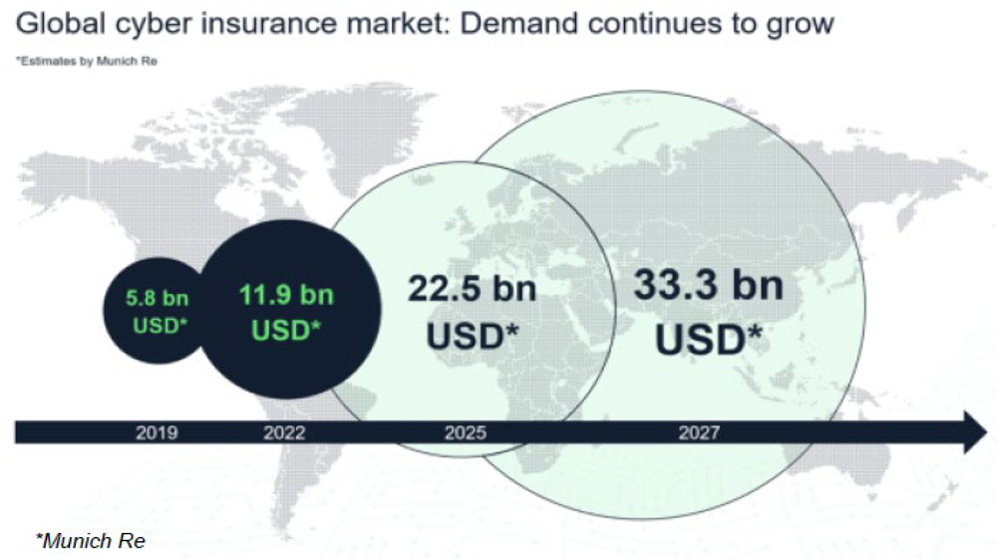
Who steals my purse steals trash . . . But he that filches from me my good name robs me of that which not enriches him, and makes me poor indeed.
—William Shakespeare, Othello
Casualty actuaries know risk, and at the May CAS Spring Meeting three of them focused on a substantial but hard-to-quantify risk: an insurance company’s good name.
The actuaries drew on their own experiences to outline how enterprise risk managers can minimize the chance that their insurer ends up with its reputation sullied. Unlike many actuarial discussions, this one was virtually numbers-free, but it is an example of how casualty actuaries are using their skills to help chief risk officers manage their responsibilities.
All three actuaries work at Allianz, the global insurer. William von Seggern, risk coverage officer for Allianz SE, and Daniel Roth, a vice president of product development for Allianz Global Assistance, are Fellows of the Casualty Actuarial Society. Stephen Wilcox, chief risk officer of Allianz UK, is a Fellow of the U.K.’s Institute and Faculty of Actuaries. The speakers approached the topic in a methodical fashion.
First, they defined the risk. Von Seggern stated that reputational risk is the loss of value because of an event. It may stem from a direct, conscious activity, such as insuring a highway that transects an environmentally sensitive area or insuring a shipment of arms from Ukraine to Sudan. It may also stem from an indirect risk — examples include a security breach, a customer complaint going viral or a market conduct issue.
The direct risk peaks in global accounts, he said, and often involves environmental, social and governance issues — “ESGs” in the parlance. Typical risks high in ESG issues include casinos, mining activities, defense industries and financial services. Advocacy groups and nongovernmental organizations are very interested in ESG issues, he said.
It is important to understand all of the permutations of the organization being insured, von Seggern said. He gave as example a hypothetical gold mine in an African country. The government owns 30 percent of the mine. The country is not politically stable, and civil unrest is not uncommon. The loss control report cites nothing unusual. The mining process uses cyanide, which is stored in a lake, and there are villages downhill from the lake. Soldiers guard the mining site.
From a traditional insurance standpoint, von Seggern said, the policy is not unusual, but is rife with reputational risk. There are things to consider outside the standard loss control report — issues that, if they went awry, could damage an insurer’s good name: The cyanide could leach downstream into the village water supply, endangered species could be living near the mine, the government’s share of profits could be used to oppress the country’s citizens, the government soldiers could be preventing trespassers but also be holding workers in what essentially is a prison. “These are some of the issues you have to think about when you write a policy,” he said.
Wilcox, the U.K. actuary, focused on conduct risk. U.K. regulators, he said, “do have the customer’s interest at heart,” and they say the company should put customer protection above profit.
A company has leeway in what it can sell, but to satisfy regulators, it has to sell in what would be considered the proper fashion.
There are principles to consider; they ensure the company treats customers fairly. And the company must also think about the outcomes to the consumer: “Do customers think I’m being fair?”
Wilcox also worked with a case study on mobile phones. In the U.K., as in the U.S., many people have collapsed their existence into their phone. “It’s my friends; it’s my life” was how Wilcox put it.
“The more you think about it, the phone is like a bit of a pet,” he said.
Britons buy pet insurance; likewise, they want to protect their phones, so they seek out insurance. The insurance could be sold through the phone retailer as a product add-on, Wilcox said. Alternatively, it could be distributed through banks, which like to offer valuable add-ons to strengthen their customer relationships.
The choice of distribution — retailer vs. banker — is a good example of considering reputational risk in doing business. The retailer, Wilcox noted, trains staff to sell phones, not insurance. The insurer might struggle to make sure the retailer acts according to U.K. financial regulations. But the bank has the same regulator as the insurer, and therefore its interest in pleasing that regulator coincides with the insurer’s.
Travel insurance is another example, said product manager Roth. The insurance reimburses a person forced to cancel a trip if someone gets sick. Most people buy moments after they book their trip, checking a box within a solicitation that offers coverage. “The entire conduct between the company and the customer is in that box,” Roth said.
The insurer has to construct that box carefully. For example, he said, the offer must be phrased so it is not “an inducement to sell,” which might be an issue with regulators. Additionally, the policy is intended to cover broadly, Roth said, but might not cover a preexisting condition — such as having a parent already in the hospital when the policy is bought. Sometimes the policy excludes existing medical conditions; other times the policy offers an exception to the exclusion.
But people deciding to buy coverage “don’t have the time” to think through all of that, Roth said. One solution is to offer the customer 10 days to review and cancel the policy, he added. The cancellation is better than the potential blow an unhappy customer can deliver to the insurer’s reputation.
“What happens . . . when they do have an unfavorable experience?” Roth said. “They don’t tell two friends. They tell 20,000 via Facebook.”
Or they complain to the state insurance department.
Ways to Manage Reputation Risk
The session panelists offered ideas on what to consider in managing reputation risk.
- Align the interests of the insurer with customers and business partners.
- Check products and practices worldwide against all regulators that might become concerned about them.
- Be aware of how each nation’s cultural norms will react to a product. The percentage commission that is common in Asia, for example, might seem uncommonly high in Europe; this discrepancy could jeopardize the insurer’s reputation.
- Evaluate reputational risk, account by account:
- Identify the risks likely to endanger reputation. (Allianz, for example, has 20 industries it considers sensitive.)
- Evaluate those risks. One way would be to give underwriters guidelines to follow.
- Have a decision-making process where the underwriter can work with an expert sensitive to reputational issues.
- Have an appeals process to ensure that all decisions were entered prudently.












